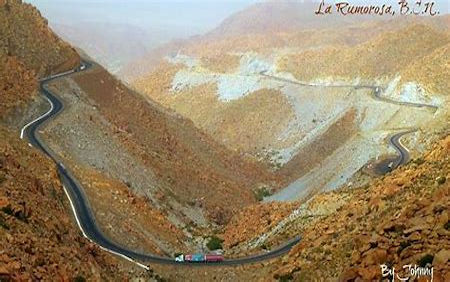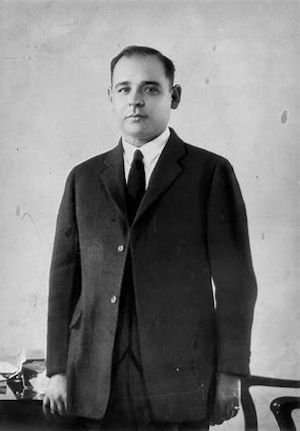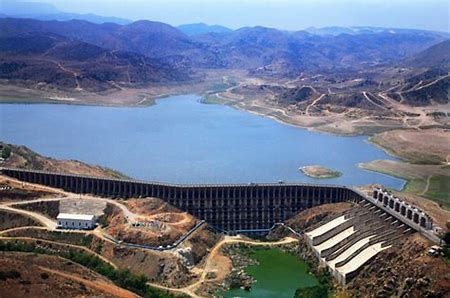 |  |
By Greg Niemann

Before Mexican statehood came to Baja California (Norte) in 1952, there were a series of territorial leaders and governors to rule over the peninsula’s growing northern population. Two governors from a century ago (1917 to 1929) were not only both heavy-handed, strong individuals, but despite any shortcomings, both brought important and sustained progress to the Bajacalifornios.
Colonel Estaban Cantú
One was Colonel Estaban Cantú. I wondered who Cantú was the first time I drove the infamous Cantú grade, that old, narrow, winding mountain road between Tecate and Mexicali. That road that drops from the tree-covered forests at Rumarosa atop the Sierra Juarez down onto the desert floor is now paralleled by a broad divided highway. But old timers never forget that white-knuckle adventure that had seen more than its share of accidents. It may seem an inglorious attribute to a real pioneer in the development of Baja California.
Born in 1881, Estaban Cantú became known for single-handedly keeping all of Baja California out of the Mexican Revolution. While a Mexican Army Major he was Chief of Line in Mexicali in 1911. In August 1912, he had his own cavalry regiment. During the Mexican Revolution, federalist Major Cantú and his men fought off revolutionists in several skirmishes along the Colorado River and its confluence with the Gila.
He also turned back a handful of revolutionary soldiers at Las Islitas on Nov. 14, 1913, effectively ending military action against the Federals in the northern area. Not many civilians supported the Federal government during this war and at war’s end Francisco “Pancho” Villa was recognized as Mexico’s leader. In recognition of his military prowess Villa had Estaban Cantú, then a Mexican Army colonel, keep his military command.
By Jan. 1, 1915 Cantú had successfully become the political leader as well, a fact confirmed by General Villa in a Jan. 20, 1915 telegram which appointed Cantú as the political and military chief, a position he would hold for 5½ years. His first act was to transfer the capital of the district to Mexicali. (It is still the capital of Baja California).

He took over a land devastated by war and left bankrupt by his predecessors. To begin the reconstruction, he levied trade duties and imposed personal taxes. He began the long process of economic development of the Mexicali Valley. He opened schools even in the smallest villages; encouraged industry, agriculture and commerce; and started important infrastructure, including drainage, roads, streets, electricity, and bridges. He also built a road (now Mexico Highway 2) to link Mexicali with Tijuana.
He put down a U.S. Conspiracy, apparently led by Harry Chandler of the Los Angeles Times, who had considerable holdings in the Mexicali Valley. It was another futile attempt to wrest the peninsula away from Mexico. (There had been numerous attempts during the latter half of the 19th century and early part of the 20th.). Two of the conspirators had been found guilty but publisher Chandler was acquitted.
By 1917, Cantú was officially named governor and military commander of the territory’s Northern District (now the state of Baja California). He tried to remain neutral to the new administration of President Venustiano Carranza, but kept ignoring federal orders.
Cantú even entertained the idea of having Baja California break away from Mexico, except instead of the U.S. getting the peninsula, it would be its own country with – you guessed it – Cantú as president. He even had American allies, most notably the San Diego Sun, but President Carranza got wind of this brainstorm, set up and investigation, and squelched the idea.
Baldomero Almada was appointed governor but Cantú refused him entrance. They had to get former hero Cantú out by force, sending troops under the command of General Abelardo L. Rodríguez. In July 1920, Colonel Cantú abandoned his post and retreated.
While he was considered despotic and difficult, his legacy is voluminous. He kept peace and order and began unprecedented constructive activity. He developed the Valley of Mexicali for the benefit of Mexicans, roads to Mexicali, as well as a road to San Felipe. He extended education. He helped void contracts the Mexican government had made with foreign colonization companies that thwarted economic and social development.

In spite of the black clouds and monumental ego, Colonel Estaban Cantú brought unprecedented prosperity to Baja California. Along with the Cantú grade, among other place names attributed to Cantú is a small village south of Ensenada called Coronel Estaban Cantú.
President Abelardo L. Rodríguez
It was General Abelardo L. Rodríguez who was called upon to help oust Governor Cantú in 1920. After Cantú was gone, in 1923 Rodríguez became Governor of the Baja California northern territory. His tenure was aided by prohibition in the United States which brought great opportunity and economic growth to Baja California, mostly in the form of alcohol and gambling.
Born in 1889 to a poor family in Guaymas, Sonora, Rodriguez worked in a hardware store and in a copper mine before becoming a professional baseball player. He joined the Mexican Revolution in 1913 and while he had only had a 4th grade education he began moving up the military ranks soon after. He became a Colonel in 1916, and was named Military Commander of northern Baja California in 1921.
While vice had actually begun operating under Governor Cantú, many saloons and restaurants near the border were created in the early to mid-1920s, primarily to cater to hordes of visiting thirsty Americans. Tijuana became a boomtown and was established as a municipality in 1925. Thus, Rodríguez was able to capitalize on the good economic times and get much done.
He constructed numerous public buildings, including hospitals and schools; he encouraged teachers and paid them well; he promoted colonization with Mexican nationals; he encouraged cattle raising and farming; he promoted industry and founded an agricultural bank, the first in Mexico; he started work on the dam near Tijuana that still bears his name. Along with infrastructure he had many streets in Tijuana and Mexicali paved. He built libraries and theaters and the paved road from Tijuana to Ensenada.
However, at the end of Rodríguez’ term in 1929, not only was there a worldwide economic crisis, but the U.S. had repealed prohibition, and progress in Baja California slowed.
Rodríguez went on to become President of Mexico (1932-1934), and one of the things he did for Baja California was to declare the peninsula a duty-free port, an action that helped spur economic development.

Rodríguez lived in a palatial ranch house amid olive groves six miles north of Ensenada at El Sauzal. Now called the Hacienda de Abelardo L. Rodriguez, the estate has in recent years been a school, Tecnológico de Baja California, and now still graces the area. Across the highway is the large Pesquera del Pacifico fish cannery established and owned by Rodriguez. It is reputed that workers at the odiferous fish cannery received annual dividends.
According to writer Enrique Krauze in Mexico: Biography of Power, Rodiguez made a fortune for himself during prohibition days. However, his official legacy includes a long list of improvements for the people of Baja California. The Tijuana airport is officially called the General Abelardo L. Rodriguez International Airport. Rodriguez died in La Jolla, California in 1967.
Rodríguez ’son Abelardo (Rod) Rodríguez later was instrumental in the development of Baja California Sur, establishing several resort hotels in the La Paz and Cabo San Lucas areas.
About Greg
Greg Niemann, a long-time Baja writer, is the author of Baja Fever, Baja Legends, Palm Springs Legends, Las Vegas Legends, and Big Brown: The Untold Story of UPS. Visit www.gregniemann.com.

Great service, EZ and reasonbably priced. Been using Baja Bound for many years now. Great company...

I’ve used them for years and it’s always been quick and easy to get our insurance when...

This is a great service. It was easy to use and my US Insurance agent said this was wise to use a...